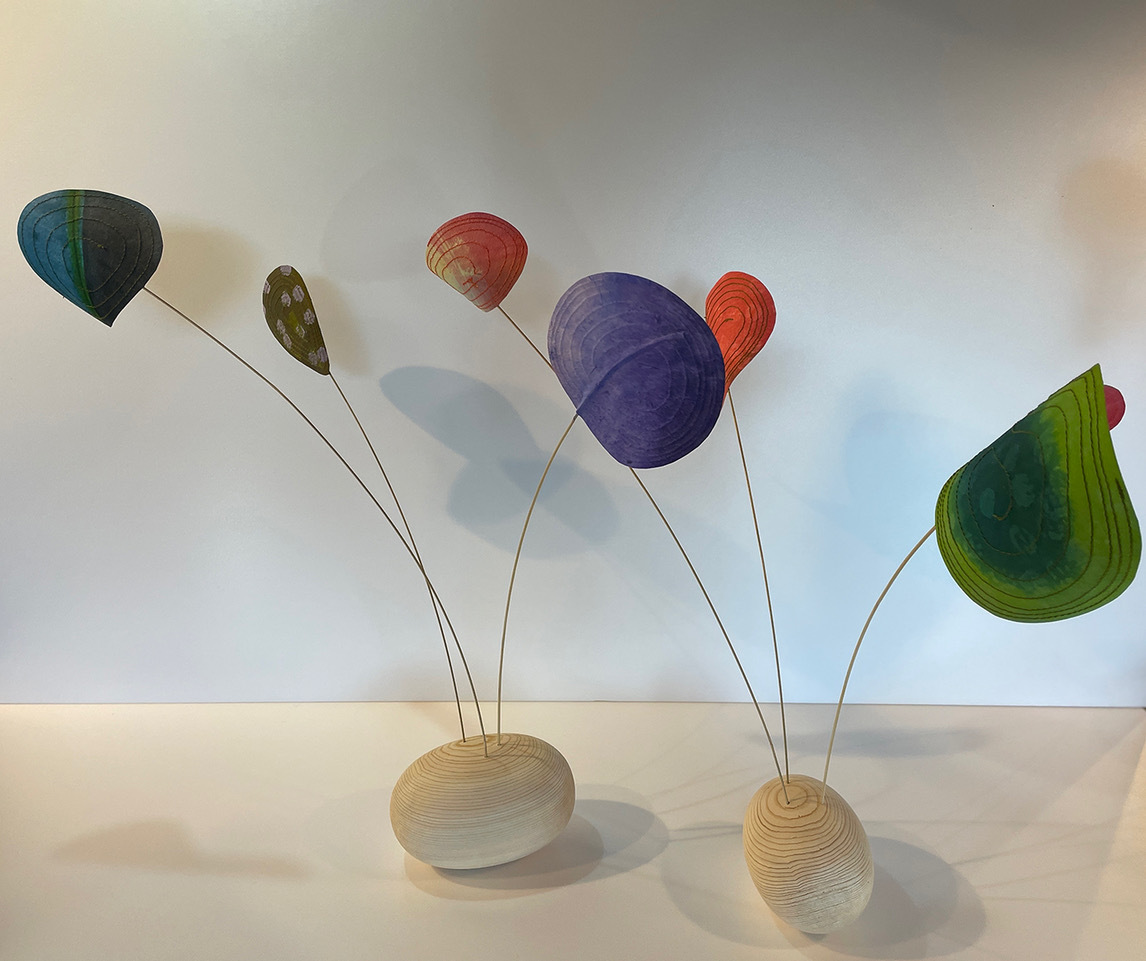
Kazuko Saeki was born in Shikoku、Japan in 1951.
As a child, she enjoyed reading the small art books that her father, who was an art lover, bought for her and became attracted to artists such as Klee, Kandinsky, and Matisse from an early age. She still likes vivid colors.
By the time she graduated from Musashino Art University studying craft design, she decided to become an artist. Rather than becoming a designer, she felt she was more suited to being an artist involved in all aspects of the creation process. It was a dream come true to be able to make a living by weaving tapestries.
At the age of 30, She held her first solo exhibition, which led to a gradual increase in public art commissions.
After making tapestries for 20 years, she began to realize that there was no demand for weaving. In order to respond to orders in various architectural spaces, she had to abandon her obsession with technique. This is because woven fabric is not necessarily the most suitable object for every location.
―Thread Leaf―
In 2016, she held a solo exhibition at the Kichijoji Museum of Art titled “Itonoha”.
It was method of placing threads, Japanese paper, cloth, etc. on a nylon tulle and fastening it with a sewing machine. Various materials overlapped to create a mysterious cloth with a layered effect that looked like a leaf. In order to fix the overlapping appearance, she attached a spring wire and protruded a part like a willow branch from the wall. 15,000 thread leaves were made for this exhibition and was the starting point of the period that spread from flat to three-dimensional.
After that, she created a three-dimensional fiber art using curved shafts and began to install them in the colonnade space. The use supports expanded the range of motion of the work. Made of light materials, are suitable for large atriums without feeling too overwhelming.
2022 Rakuchu Exhibition Sennyu-ji Temple(Kyoto)
-Japanese paper-
Handmade Japanese paper is in danger of dying out in Japan, but it is an excellent material for modeling. For Kazuko Saeki, whose policy is to "create works that focus on color and texture", handmade washi has become an important material. There are still a few areas in Japan continuing this traditional industry that is on the verge of disappearing. In order to ascertain the characteristics, she visited factories and asked the opinion. Requests for public art have come from all over the country, but she has tried to use local paper as much as possible and to promote local production for local consumption. The panel work, which is made by coloring Japanese paper with pigment paint, pasting it on wooden tiles, and combining them, was named "Washi Mosaic". Three sizes of pieces are made using 0.4-inch-thick wood, and the edges are shaved to give a three-dimensional effect. She can be combined in a size that matches the wall, are durable, and bring warmth to a modern architectural space.
―Circular Cotton Paper―
The material she is working on now is circular cotton paper, made by turning old clothing into cotton powder and mixing it with paper mulberry and pulp. Not only is there the social significance of using upcycled materials, but also the texture, ease of processing, and color of this material, a mixture of fiber and paper, is attractive in all aspects. Using this paper, she is currently making two pieces: a small one with a height of 24 inches and a large one with a height of 26 feet.
-Idea-
What kind of materials can be discovered in the future, and what kinds of works can be created using them? This expectation is a major motivation for immersing oneself in creative activities.
Moving her hands, thinking, fantasizing. Kazuko Saeki's originality is born from the harmonious combination of memories of her past creations and things she is most interested in at the time.
Inspiration is dormant in each of us. It can be awakened with a little stimulation. When this happens, it is the artist‘s job to make the ephemeral tangible - for the benefit of mankind.

























